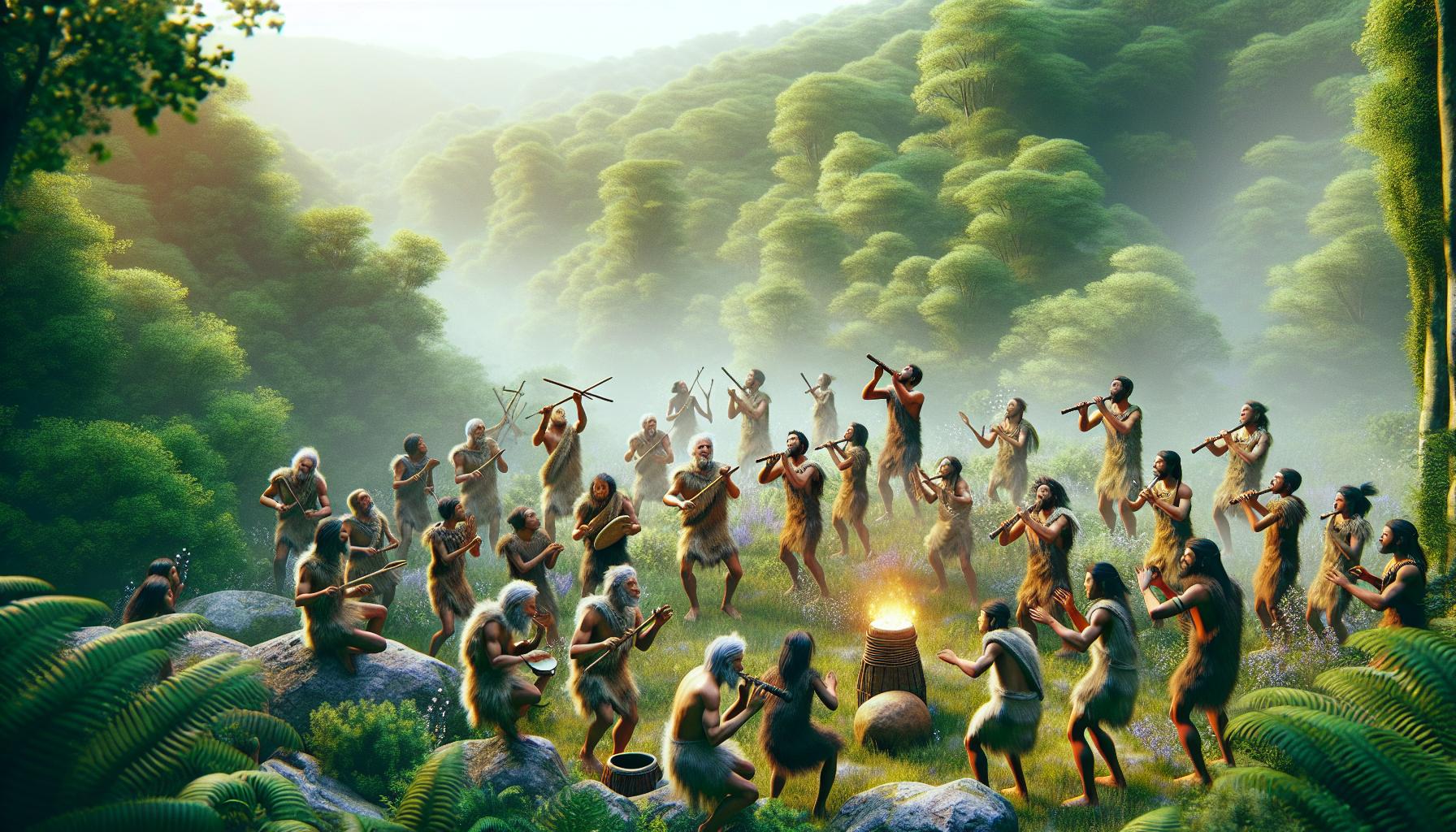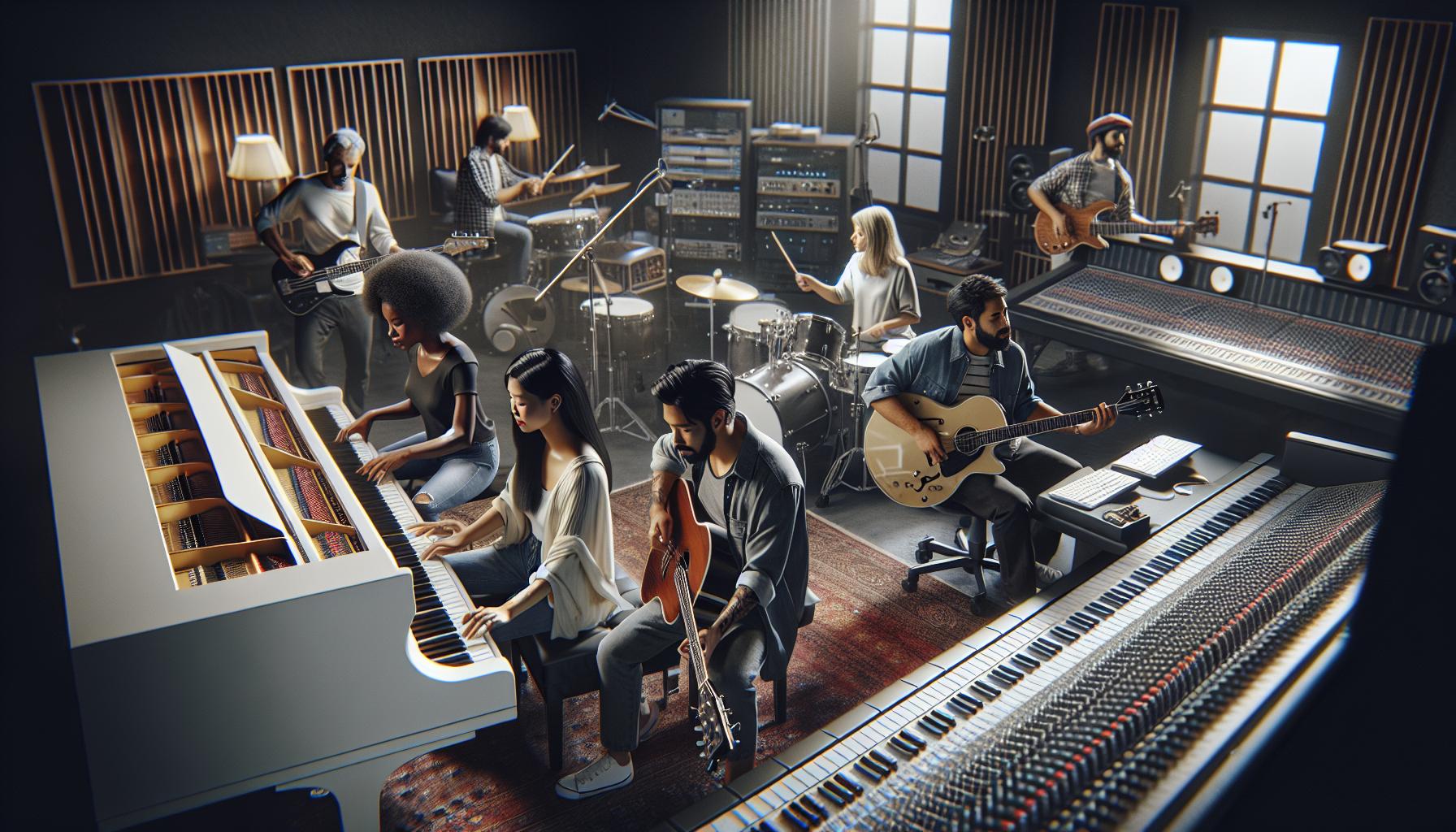Music is a universal language that transcends borders and cultures, but when did it all begin? The origins of music trace back to prehistoric times, where early humans likely used simple sounds and rhythms to communicate and express emotions. These primitive forms of music laid the groundwork for the rich tapestry of musical traditions we enjoy today.
As societies evolved, so did music. From ancient rituals to the development of musical notation, each era contributed to the complexity and diversity of musical expression. Understanding when music started not only reveals the creativity of early humans but also highlights its enduring significance in shaping human culture throughout history.
Key Takeaways
- Music originated in prehistoric times as a form of communication and emotional expression, using rudimentary sounds and rhythms.
- Early music involved basic vocalizations and simple instruments, with archaeological evidence suggesting the existence of flutes over 35,000 years old.
- The evolution of music is marked by significant advancements in various civilizations, including the development of musical notation and the incorporation of music into religious and social practices.
- Cultural factors, such as instruments, scales, and genres, are crucial in shaping the diversity of music worldwide and reflect the values and traditions of different communities.
- Technological innovations, from primitive instruments to recording technology, have continuously transformed music creation, performance, and accessibility.
- Contemporary music genres have evolved dramatically, influenced by social movements and globalization, creating a rich, diverse musical landscape.
When Did Music Start
Music traces back to prehistoric times as a form of communication and emotional expression.
Definition of Music
Music defines as the organized combination of sounds that convey emotions, ideas, or stories. It encompasses elements such as rhythm, melody, harmony, and timbre, creating a rich auditory experience. This definition spans diverse genres and styles across various cultures.
Early Forms of Music
Early forms of music emerged from basic vocalizations and the use of natural objects. Early humans created sounds by clapping hands, vocal chanting, and using primitive instruments like bones and stones. Archaeological findings, such as flutes made from bird bones, date back over 35,000 years. Rituals and communal gatherings often featured these sounds, serving spiritual and social purposes. These foundational elements laid the groundwork for complex musical traditions that developed with human societies.
Historical Timeline of Music Development

Music’s development spans millennia, reflecting human creativity and cultural shifts throughout history. The following timeline highlights key periods in the evolution of music, showcasing its rich diversity.
Prehistoric Music
Prehistoric music marks the beginning of musical practice, characterized by vocal sounds and rudimentary instruments. Early humans communicated emotions through rhythms and chants. Archaeological discoveries, such as bone flutes, indicate the use of simple melodies around 35,000 years ago. These sounds served spiritual and social functions, uniting communities in ritualistic gatherings.
Ancient Civilizations and Music
Ancient civilizations made significant advancements in music, incorporating it into religious ceremonies, entertainment, and daily life. The Sumerians, Egyptians, and Greeks developed various musical systems and notation. Mesopotamian cultures used instruments like lyres and harps, while the Greeks introduced scales and defined musical modes. Ancient texts reveal that music accompanied poetry and dramatic performances, shaping cultural identity.
The Middle Ages and Music Evolution
The Middle Ages, spanning from the 5th to the 15th century, witnessed profound changes in music. Gregorian chant emerged as a prominent form of vocal music in religious settings. During this period, notation systems evolved, allowing for more complex compositions. Secular music also gained popularity, with the rise of troubadours and minstrels. Musical forms diversified, laying the groundwork for the Renaissance’s richer textures and harmonies.
Cultural Influences on Music

Cultural factors significantly shape music, influencing styles, themes, and practices across societies. Music serves as a reflection of cultural identities, expressing values and traditions unique to each community.
Music in Different Cultures
Music varies widely among cultures, showcasing regional instruments, scales, and performance practices. Instruments like the sitar in India, the djembe in West Africa, and the didgeridoo in Australia highlight distinct musical traditions. Additionally, scales differ; Western music primarily uses the diatonic scale, while many Eastern traditions utilize pentatonic or microtonal scales. Folk music often serves as a conduit for storytelling, encompassing community history and experiences. Global interactions through trade and migration facilitate the exchange of musical ideas, leading to hybrid genres such as jazz, reggae, and world music.
The Role of Religion in Music
Religion has profoundly impacted the development of music, anchoring it within spiritual practices and traditions. Sacred music, including Gregorian chants in Christianity and bhajans in Hinduism, plays a crucial role in rituals and ceremonies. Specific instruments, like the organ in churches and the tabla in Indian temples, accompany religious observances. Music fosters a sense of community, encouraging collective worship and emotional connection. Moreover, religious hymns often convey theological concepts, enhancing understanding and devotion among followers. The relationship between music and religion continues to evolve, illustrating the importance of spiritual expression across cultures.
Technological Advancements in Music

Technological advancements have significantly shaped the development and accessibility of music throughout history. Innovations in instruments and recording technologies have transformed how music is created, performed, and consumed.
Instruments Through the Ages
Instruments evolved from simple objects to highly sophisticated devices, reflecting cultural changes and technological progress.
- Prehistoric Instruments: Early humans crafted basic instruments from materials like bones and stones, creating the first rudimentary musical tools.
- Ancient Civilizations: The Sumerians developed the lyre, while the Egyptians used harps and flutes in rituals, with each instrument serving specific cultural functions.
- Medieval Period: Innovations led to the creation of string instruments, such as the lute and fiddle, enhancing musical complexity.
- Renaissance Era: The advent of keyboard instruments, including the harpsichord and organ, facilitated the rise of polyphonic music.
- Industrial Revolution: The late 18th and early 19th centuries saw mass production of instruments, making them more accessible to the public. Woodwinds, brass, and percussion instruments gained prominence, further diversifying musical styles.
The Impact of Recording Technology
Recording technology revolutionized how music is produced and shared.
- Acoustic Recording (late 19th Century): Early recording methods captured sound on wax cylinders, allowing for the preservation of music and enabling wide dissemination.
- Magnetic Tape (1940s): The introduction of magnetic tape improved sound quality and editing capabilities, leading to more polished recordings.
- Digital Recording (1980s): Digital technology transformed music production, facilitating high-quality recordings and editing on personal computers.
- Streaming Services (21st Century): Platforms like Spotify and Apple Music changed how audiences access and consume music, making vast libraries available instantly.
Technological advancements in instruments and recording have continuously enhanced the music landscape, shaping listening experiences and enabling greater artistic expression.
The Evolution of Music Genres
Music genres have evolved significantly over time, reflecting cultural, social, and technological changes. This section explores classical music and contemporary music genres, highlighting their unique characteristics and historical contexts.
Classical Music
Classical music, originating in Western culture, spans several centuries and encompasses various styles, including Baroque, Classical, Romantic, and Contemporary classical music. This genre features structured compositions, intricate melodies, and orchestral arrangement. Key composers like Johann Sebastian Bach, Ludwig van Beethoven, and Wolfgang Amadeus Mozart played crucial roles in shaping the genre. Symphonies, concertos, and operas exemplify the complexity and emotional depth of classical music.
In classical music, notation systems enable precise communication of musical ideas, allowing performers to interpret works faithfully. Concert halls serve as venues for live performances, promoting communal experiences and a shared appreciation for this art form. The influence of classical music extends beyond its era, impacting later genres and enriching the musical landscape with its complexity.
Contemporary Music Genres
Contemporary music genres encompass a diverse range of styles, emerging primarily from the 20th century onwards. This category includes popular genres like rock, pop, hip-hop, electronic, jazz, and country, each characterized by distinct rhythms, instrumentation, and cultural influences.
Popular music, often driven by technological advancements, emphasizes accessibility and mass appeal. The rise of radio, television, and the internet has facilitated the rapid dissemination of music, leading to the globalization of contemporary genres. Genres like rock and hip-hop reflect social movements and cultural changes, often addressing themes of identity, resistance, and empowerment.
Furthermore, electronic music has reshaped the soundscape with digital synthesizers and production software, fostering new subgenres like house and techno. Jazz, with its improvisational nature, continues to evolve, integrating elements from various cultures and styles. The fusion of genres, such as country and rock or hip-hop and jazz, exemplifies the ongoing innovation in contemporary music, promoting a rich and ever-changing musical landscape.
Music’s Journey From Prehistoric Sounds To Today’s Diverse Genres
Music’s journey from prehistoric sounds to today’s diverse genres showcases humanity’s creativity and cultural evolution. Its role in rituals and social gatherings highlights music’s significance in fostering community and emotional connections. As technological advancements continue to reshape how music is created and consumed, the dynamic interplay between culture and innovation remains evident. Each era contributes to a rich tapestry of musical expression that reflects the values and experiences of societies around the world. The ongoing evolution of music promises to inspire future generations, ensuring its place as a vital form of human expression.